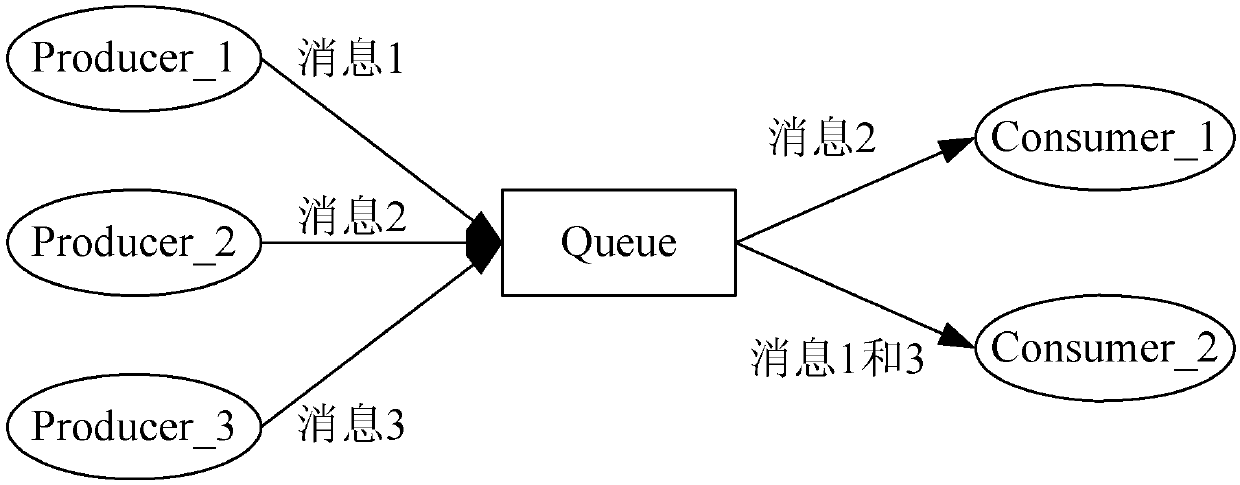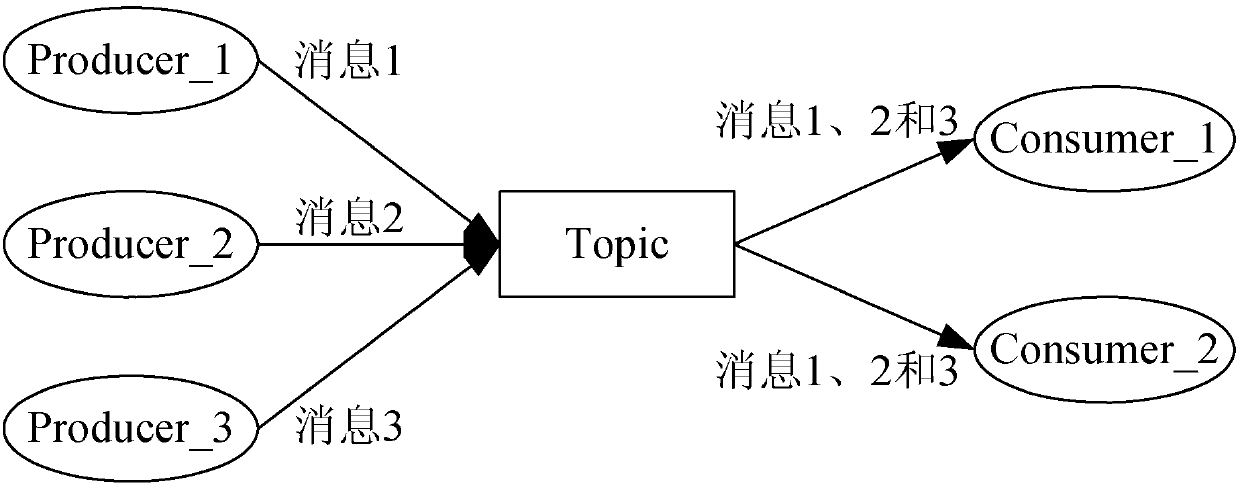Message transmission method and device
A message transmission and message technology, applied in the computer field, can solve the problems that users cannot determine the message mode, change, and cannot dynamically change the message mode, etc., to achieve the effect of increasing robustness, reliability and flexibility
- Summary
- Abstract
- Description
- Claims
- Application Information
AI Technical Summary
Problems solved by technology
Method used
Image
Examples
Embodiment 2
[0062] Embodiment two. The consumption identifiers in Embodiment 1 and Embodiment 2 are message-collection_1#ID_1 and message-collection_1#ID_2 respectively. Since the processing process of the message queue and Consumer_1 is the same as step S403 to step S407, only the The process of message queue and Consumer_2.
[0063] Image 6 It is a schematic diagram of realizing the point-to-point mode of the message transmission method according to the embodiment of the present invention. Such as Image 6 As shown, assuming that Consumer_2 connects to the message queue and sends a consumption ID (message-collection_1#ID_1) the same as Consumer_1, the processing process between the message queue and Consumer_2 is as follows:
Embodiment 1
[0065] (1) Consumer_2 connects to the message queue, and then sends message-collection_1#ID_1 to the message queue;
[0066] (2) After the message queue receives message-collection_1#ID_1, it is confirmed by comparison that the storage queue with the same consumption ID and the name of message-collection_1#ID_1 still exists;
[0067] (3) The message queue reads all messages whose message type is message-collection_1 from the memory, and then puts the messages into the storage queue named message-collection_1#ID_1. Assume that three messages are put into the storage queue named message-collection_1#ID_1, namely messages 1, 2 and 3.
[0068] (4) The message queue randomly sends the messages in the storage queue named message-collection_1#ID_1 to one of the consumers corresponding to the storage queue. Wherein, the consumer corresponding to the storage queue refers to a consumer whose consumption ID is the same as the name of the storage queue. For example, send message 1 and m...
Embodiment 3
[0079] Embodiment 3: Assume that Consumer_2 closes the connection with the message queue next, and then re-establishes a connection with the message queue and sends a different consumption ID (message-collection_1#ID_2) from Consumer_1. At this time, the processing process between the message queue and Consumer_2 is as follows:
[0080] (1) Consumer_2 closes the connection with the message queue. Close the application of Consumer_2, and Consumer_2 will automatically disconnect from the message queue.
[0081] (2) After the message queue finds that Consumer_2 closes its connection, it checks all the existing storage queues and finds that the storage queue named message-collection_1#ID_1 is still being used by consumers, and does not perform any processing on the storage queue.
[0082] (3) Consumer_2 reconnects to the message queue, and then sends a consumption ID different from Consumer_1 to the message queue, for example, the sent consumption ID is message-collection_1#ID_2. ...
PUM
 Login to View More
Login to View More Abstract
Description
Claims
Application Information
 Login to View More
Login to View More - R&D
- Intellectual Property
- Life Sciences
- Materials
- Tech Scout
- Unparalleled Data Quality
- Higher Quality Content
- 60% Fewer Hallucinations
Browse by: Latest US Patents, China's latest patents, Technical Efficacy Thesaurus, Application Domain, Technology Topic, Popular Technical Reports.
© 2025 PatSnap. All rights reserved.Legal|Privacy policy|Modern Slavery Act Transparency Statement|Sitemap|About US| Contact US: help@patsnap.com



